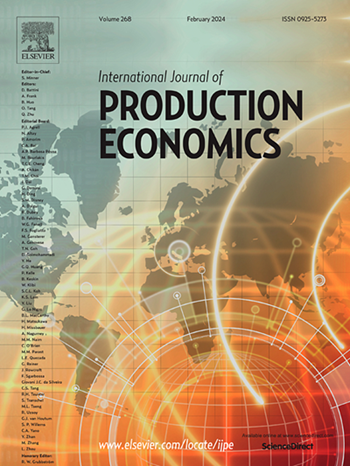医药部门的区块链:有关挑战和对策的经验证据
IF 10
1区 工程技术
Q1 ENGINEERING, INDUSTRIAL
引用次数: 0
摘要
制药部门正在经历全球药物使用和支出的快速增长。随着该行业的扩张,风险也在增加。区块链技术有望在解决药品供应链中的关键问题方面带来重大好处,例如增强可追溯性、防止假药和保护敏感数据。然而,它的采用并非没有批评,面临着诸如高实施成本,监管不确定性,甚至对其所谓的好处的怀疑等挑战。本研究首次对医药行业采用区块链面临的挑战及对策进行实证分析。该研究旨在确定主要挑战,并提出有效的解决方案,以支持更广泛的实施。采用了三步法:系统的文献综述来识别挑战,接着是德尔菲研究来评估其相关性,最后是问卷调查收集实际对策。确定了17个主要挑战和8套应对措施,并确定了优先顺序,其中“IT安全”被列为最关键的挑战,“教育和培训”被列为最有效的对策,因为它解决了更紧迫的挑战。然后使用技术-组织-环境(TOE)框架和利益相关者理论对结果进行分析。这些互补框架的使用有助于阐明不同利益攸关方如何根据其作用应对不同的挑战,强调其集体和合作努力的重要性。这种理论框架的整合为解决与区块链相关的挑战并加速其采用提供了有价值的实践见解。此外,本研究还将制药行业与其他应用领域进行了比较,从而深入了解区块链在各行业的应用情况。本文章由计算机程序翻译,如有差异,请以英文原文为准。
Blockchain in the pharmaceutical sector: empirical evidence on the associated challenges and countermeasures
The pharmaceutical sector is experiencing rapid growth in global medicine usage and spending. As the sector expands, so do risks. Blockchain technology promises significant benefits for addressing key issues in the pharmaceutical supply chains, such as enhancing traceability, preventing counterfeit drugs, and securing sensitive data. However, its adoption is not without criticism, facing challenges such as high implementation costs, regulatory uncertainties, and even skepticism about its purported benefits. This study provides the first empirical analysis of blockchain adoption challenges and countermeasures in the pharmaceutical industry. The research aims to identify key challenges and propose effective solutions to support broader implementation. A three-step methodology was employed: a systematic literature review to identify challenges, followed by a Delphi study to assess their relevance, and finally, a questionnaire collecting practical countermeasures. Seventeen major challenges and eight sets of countermeasures were identified and prioritized, with "IT security" being ranked as the most critical challenge and "Education and training" as the most effective countermeasure as it tackles more pressing challenges. The results were then analyzed using the Technology-Organization-Environment (TOE) framework and the Stakeholder Theory. The use of these complementary frameworks allowed to shed light on how different stakeholders can address the different challenges based on their roles, emphasizing the importance of their collective and collaborative efforts. This integration of theoretical frameworks provides valuable practical insights for addressing blockchain-related challenges and accelerating its adoption. Moreover, this research compares the pharmaceutical sector with other application areas, extending insights into blockchain adoption across industries.
求助全文
通过发布文献求助,成功后即可免费获取论文全文。
去求助
来源期刊
CiteScore
21.40
自引率
7.50%
发文量
266
审稿时长
52 days
期刊介绍:
The International Journal of Production Economics focuses on the interface between engineering and management. It covers all aspects of manufacturing and process industries, as well as production in general. The journal is interdisciplinary, considering activities throughout the product life cycle and material flow cycle. It aims to disseminate knowledge for improving industrial practice and strengthening the theoretical base for decision making. The journal serves as a forum for exchanging ideas and presenting new developments in theory and application, combining academic standards with practical value for industrial applications.

 求助内容:
求助内容: 应助结果提醒方式:
应助结果提醒方式:


